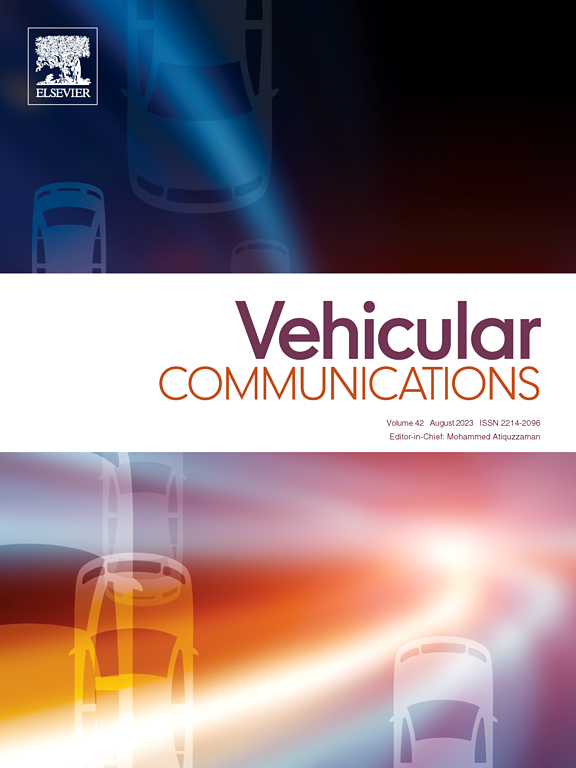A survey on physical layer security for 5G/6G communications over different fading channels: Approaches, challenges, and future directions
IF 6.5
2区 计算机科学
Q1 TELECOMMUNICATIONS
引用次数: 0
Abstract
The surge in wireless network attacks has intensified the focus on physical layer security (PLS) within academia and industry. As PLS provides security solutions by leveraging the randomness of wireless channels without the need for encryption/decryption keys, fading channels play a major role in PLS solutions. This survey aims to understand the effect of fading on PLS for 5G/6G communications by utilizing various PLS techniques such as beamforming, artificial noise injection, cooperative and opportunistic relaying, physical authentication, and intelligent reflective surface-based PLS over various fading channels. Initially, the role of PLS in 5G/6G communications, its fundamentals, and various techniques available for 5G/6G communications are examined. Since PLS for 5G communications has been extensively studied in the literature, we categorize it into two cases, direct and indirect communications, and provide a comprehensive survey on PLS for 5G communications over various fading channels. Thereafter, we survey the PLS for 6G communications over various fading channels, noting that the work available for PLS in 6G communications is limited and in its early stages. Given the increasing attention on artificial intelligence and machine learning (AI/ML) for wireless communications, this survey also explores PLS based on AI/ML techniques over various fading channels. Finally, the survey concludes with observations on challenges and future directions.

不同衰落信道下5G/6G通信物理层安全研究:方法、挑战和未来方向
无线网络攻击的激增加剧了学术界和工业界对物理层安全(PLS)的关注。由于PLS通过利用无线信道的随机性而不需要加密/解密密钥来提供安全解决方案,因此衰落信道在PLS解决方案中起着重要作用。本研究旨在了解衰落对5G/6G通信中PLS的影响,利用各种PLS技术,如波束成形、人工噪声注入、合作和机会中继、物理认证和基于智能反射表面的各种衰落信道上的PLS。首先,检查PLS在5G/6G通信中的作用,其基本原理以及可用于5G/6G通信的各种技术。由于5G通信的PLS在文献中已经得到了广泛的研究,我们将其分为直接通信和间接通信两种情况,并对各种衰落信道下5G通信的PLS进行了全面的调查。此后,我们调查了各种衰落信道上6G通信的PLS,注意到6G通信中可用于PLS的工作是有限的,并且处于早期阶段。鉴于人们越来越关注无线通信中的人工智能和机器学习(AI/ML),本调查还探讨了基于AI/ML技术在各种衰落信道上的PLS。最后,调查总结了对挑战和未来方向的观察。
本文章由计算机程序翻译,如有差异,请以英文原文为准。
求助全文
约1分钟内获得全文
求助全文
来源期刊

Vehicular Communications
Engineering-Electrical and Electronic Engineering
CiteScore
12.70
自引率
10.40%
发文量
88
审稿时长
62 days
期刊介绍:
Vehicular communications is a growing area of communications between vehicles and including roadside communication infrastructure. Advances in wireless communications are making possible sharing of information through real time communications between vehicles and infrastructure. This has led to applications to increase safety of vehicles and communication between passengers and the Internet. Standardization efforts on vehicular communication are also underway to make vehicular transportation safer, greener and easier.
The aim of the journal is to publish high quality peer–reviewed papers in the area of vehicular communications. The scope encompasses all types of communications involving vehicles, including vehicle–to–vehicle and vehicle–to–infrastructure. The scope includes (but not limited to) the following topics related to vehicular communications:
Vehicle to vehicle and vehicle to infrastructure communications
Channel modelling, modulating and coding
Congestion Control and scalability issues
Protocol design, testing and verification
Routing in vehicular networks
Security issues and countermeasures
Deployment and field testing
Reducing energy consumption and enhancing safety of vehicles
Wireless in–car networks
Data collection and dissemination methods
Mobility and handover issues
Safety and driver assistance applications
UAV
Underwater communications
Autonomous cooperative driving
Social networks
Internet of vehicles
Standardization of protocols.
 求助内容:
求助内容: 应助结果提醒方式:
应助结果提醒方式:


